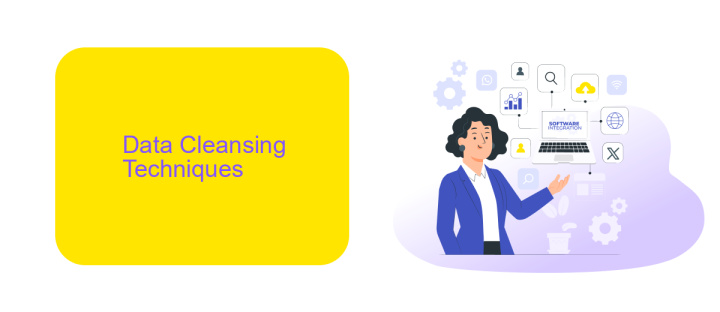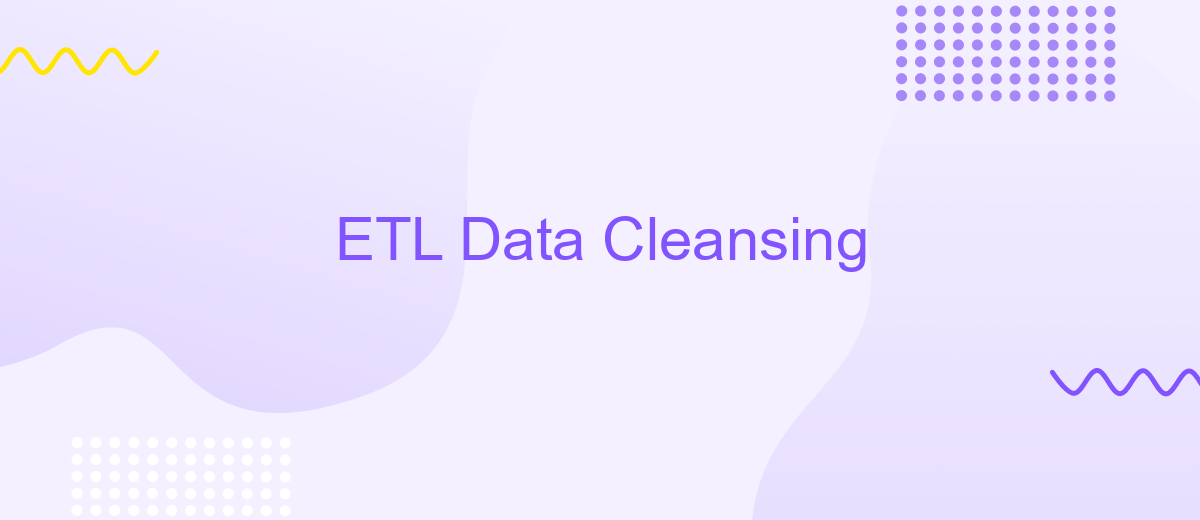ETL Data Cleansing
ETL (Extract, Transform, Load) data cleansing is a critical process in data management, ensuring the accuracy, consistency, and reliability of data before it is loaded into a data warehouse. This process involves identifying and correcting errors, removing duplicates, and standardizing data formats. Effective data cleansing enhances data quality, which is essential for making informed business decisions and maintaining operational efficiency.
Introduction
ETL (Extract, Transform, Load) data cleansing is a critical process in data management that ensures the accuracy, consistency, and reliability of data before it is used for analysis. This process involves extracting data from various sources, transforming it into a suitable format, and loading it into a target system. Effective data cleansing helps organizations make informed decisions, improve operational efficiency, and maintain data integrity.
- Identify and remove duplicate records.
- Correct errors and inconsistencies in data entries.
- Standardize data formats and values.
- Fill in missing values and validate data accuracy.
- Integrate data from multiple sources seamlessly.
Modern tools and services, such as ApiX-Drive, facilitate the integration and automation of data cleansing processes. ApiX-Drive allows users to connect various data sources and automate the ETL workflow, ensuring that data is consistently cleaned and ready for analysis. By leveraging such tools, organizations can streamline their data management efforts and focus on deriving valuable insights from their data.
Data Cleansing Techniques

Data cleansing is essential for maintaining the accuracy and reliability of data in ETL processes. One common technique involves removing duplicates, ensuring that each data entry is unique and eliminating redundancy. Another method is standardizing data formats, such as dates and addresses, to ensure consistency across datasets. This can involve converting all date formats to a single standard or ensuring that phone numbers are uniformly formatted.
Validation rules are also crucial, as they help identify and correct errors by setting criteria that data must meet. For instance, ensuring that email addresses contain "@" and domain names. Additionally, using integration services like ApiX-Drive can streamline the data cleansing process by automating the transfer and transformation of data between various systems, reducing the likelihood of errors and inconsistencies. By implementing these techniques, organizations can enhance the quality and usability of their data, leading to more accurate analytics and better decision-making.
ETL Tools for Data Cleansing

ETL tools play a crucial role in data cleansing by automating the extraction, transformation, and loading of data. These tools help ensure that the data is accurate, consistent, and ready for analysis. Effective ETL tools can handle large volumes of data, identify and correct errors, and ensure data integrity.
- Talend: An open-source ETL tool that offers extensive data integration and cleansing capabilities.
- Informatica: Known for its robust data cleansing features, it supports a wide range of data sources.
- Apache Nifi: A powerful tool for automating data flow between systems, making it easier to clean and integrate data.
- ApiX-Drive: This service simplifies the integration of various applications and automates data workflows, including cleansing processes.
- Microsoft SSIS: A comprehensive ETL tool that provides strong data transformation and cleansing functionalities.
These ETL tools are essential for maintaining high-quality data within an organization. By automating the data cleansing process, they help save time and reduce errors, allowing businesses to focus on deriving valuable insights from their data. Tools like ApiX-Drive further enhance this process by facilitating seamless integration and automation of data workflows.
Best Practices for ETL Data Cleansing

Effective ETL data cleansing is crucial for maintaining data quality and ensuring reliable analytics. The process involves identifying and rectifying errors, inconsistencies, and inaccuracies in the data before it is loaded into the target system. This not only enhances the accuracy of business insights but also improves decision-making processes.
To achieve optimal results, it is essential to follow best practices in ETL data cleansing. These practices help streamline the cleansing process and ensure that the data is of high quality and ready for analysis. Consider the following guidelines:
- Define clear data quality rules and standards.
- Automate data cleansing tasks using reliable tools.
- Regularly monitor and audit data quality.
- Implement real-time data validation during the ETL process.
- Utilize integration services like ApiX-Drive to automate and streamline data workflows.
By adhering to these best practices, organizations can significantly reduce the time and effort required for data cleansing. This ensures that the data is accurate, consistent, and ready for use in analytics and reporting, ultimately leading to better business outcomes.
- Automate the work of an online store or landing
- Empower through integration
- Don't spend money on programmers and integrators
- Save time by automating routine tasks
Conclusion
In conclusion, ETL data cleansing is a critical process that ensures the accuracy, consistency, and reliability of data within any organization. By systematically identifying and rectifying errors, inconsistencies, and redundancies, businesses can leverage clean data to make more informed decisions, optimize operations, and enhance overall performance. The importance of maintaining high data quality cannot be overstated, as it directly impacts the effectiveness of data-driven strategies and analytics.
Moreover, leveraging tools and services such as ApiX-Drive can significantly streamline the integration and cleansing processes. ApiX-Drive offers seamless connectivity between various data sources and applications, enabling automated data transfers and transformations. This not only saves time and resources but also reduces the risk of human error during data handling. As businesses continue to grow and data volumes increase, adopting robust ETL data cleansing practices and utilizing efficient integration services will be paramount to sustaining data integrity and achieving long-term success.
FAQ
What is ETL Data Cleansing?
Why is data cleansing important in the ETL process?
What are common data cleansing techniques used in ETL?
How can I automate the data cleansing process in ETL?
What are the challenges associated with ETL data cleansing?
Apix-Drive is a universal tool that will quickly streamline any workflow, freeing you from routine and possible financial losses. Try ApiX-Drive in action and see how useful it is for you personally. In the meantime, when you are setting up connections between systems, think about where you are investing your free time, because now you will have much more of it.


